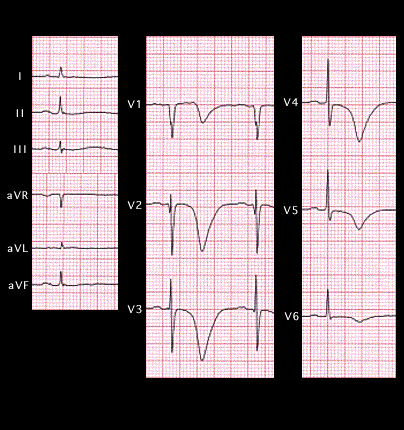
The ECG shown here is from a 70 year old male recorded 24 hours after an episode of severe retrosternal chest pain that was associated with shortness of breath. The deeply inverted T waves in the chest leads and the marked prolongation of the QT interval (580ms) are referred to as “giant T wave inversion.” These changes are consistent with, but not specific for, a non-transmural ischemic event resulting from sub-total occlusion of the left anterior descending coronary artery. When caused by an ischemic event, the T wave changes occur after the ST segment changes of acute ischemia have resolved, i.e., they are post-ischemic. The marked QT prolongation is usually short lived, lasting no more than a few days. Its mechanism is thought due to sympathetically mediated events which influence the repolarization phases of the action potential.
Giant T wave inversion may also be seen with a variety of non-ischemic events. The most common non cardiac cause is an intracranial hemorrhage or other central nervous system abnormalities. In this situation, the ECG changes are referred to as the “CVA pattern.”
